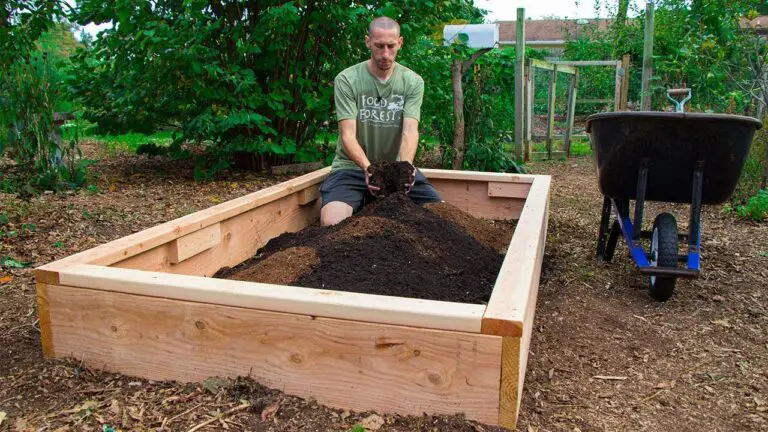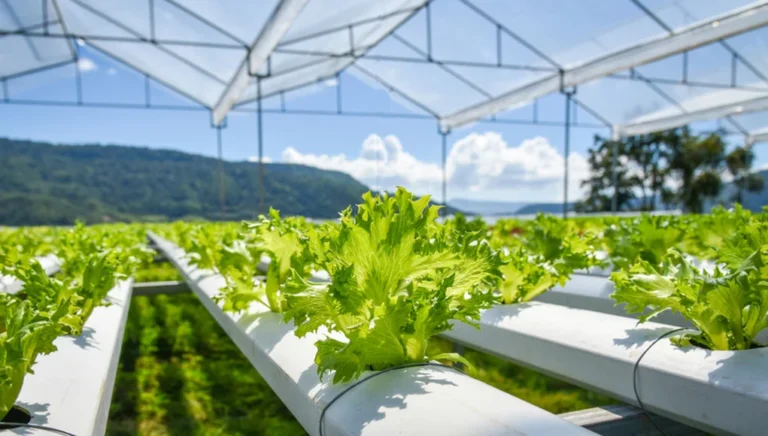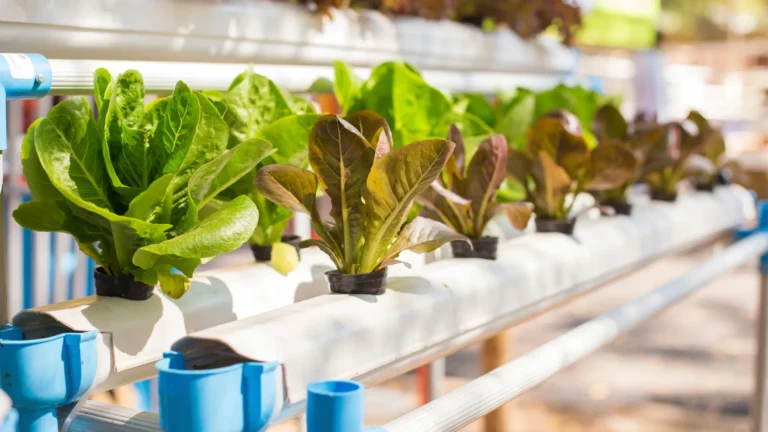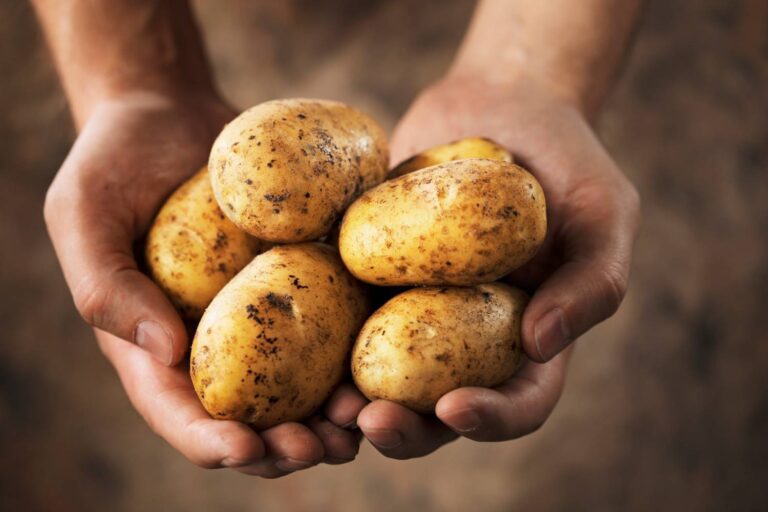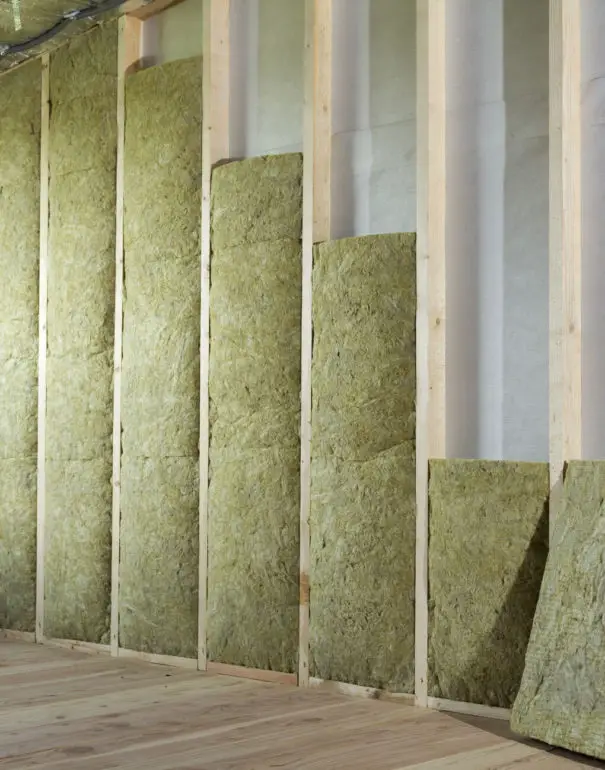Kratky Method Efficiency: Maximizing Your Hydroponic Growth
Table of Contents
The Importance of Efficient Hydroponic Growth
Hydroponic farming is rapidly gaining popularity as an efficient and sustainable method of cultivation. The importance of efficient hydroponic growth cannot be overstated, particularly in a world faced with environmental challenges and a growing need for food production. By eliminating soil and harnessing the power of nutrient-rich water solutions, hydroponics allows plants to thrive in controlled environments, maximizing their growth potential.
One of the key advantages of hydroponic systems is their ability to produce higher yields compared to traditional soil-based methods. With precise control over factors such as light, temperature, and nutrient delivery, hydroponic farmers can optimize plant growth and development. This efficiency translates into shorter growing cycles, increased crop productivity, and a more sustainable use of resources like water and fertilizers. Moreover, hydroponics also minimizes the risk of soil-borne diseases, pests, and weeds that can hinder plant growth in traditional agriculture. By utilizing efficient hydroponic techniques, growers can provide a consistent and reliable supply of fresh produce, contributing to food security and satisfying the demands of an ever-growing population.
Efficient hydroponic growth also offers significant environmental benefits. The controlled environment of hydroponic systems allows growers to conserve water by reusing and recycling nutrient solutions. Compared to traditional farming methods, hydroponics uses approximately 90% less water. Additionally, since hydroponics eliminates the need for soil, it helps reduce the spread of soil erosion and nutrient leaching, which can have detrimental effects on natural ecosystems. The controlled environments of hydroponic systems also enable growers to eliminate or significantly reduce the use of harmful pesticides and herbicides, promoting ecological balance and protecting the health of consumers.
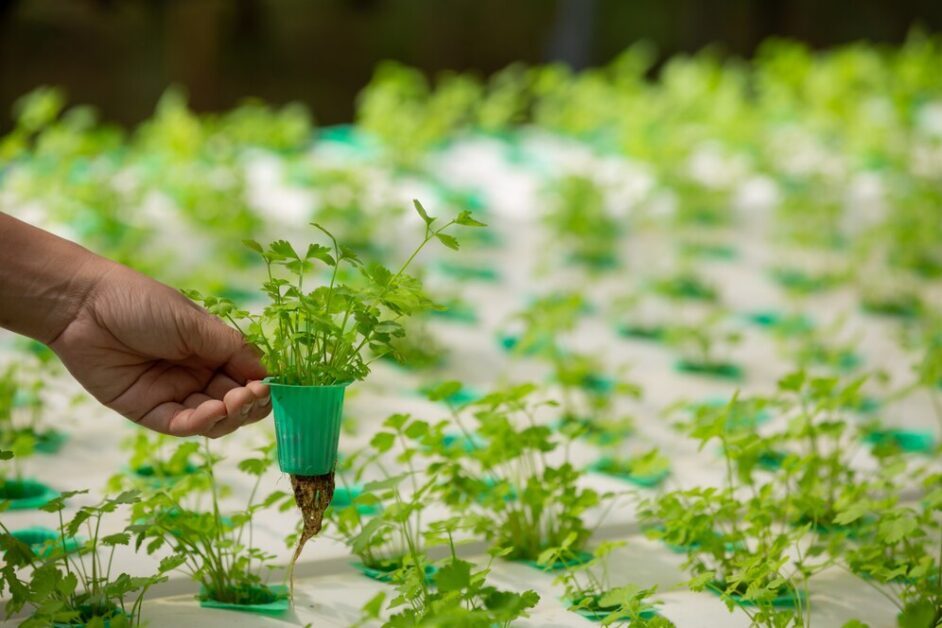
In conclusion, the importance of efficient hydroponic growth lies in its ability to revolutionize agriculture, addressing the need for sustainable and high-yielding crop production. This method offers numerous advantages, including higher yields, reduced water usage, minimized environmental impact, and enhanced food security. As the world faces increasing challenges in food production, embracing efficient hydroponic systems can be a promising solution to meet the growing demand for fresh and nutritious produce. By harnessing the power of water, nutrients, and controlled environments, hydroponics paves the way towards a greener and more sustainable future in agriculture.
• Hydroponic farming is gaining popularity as an efficient and sustainable cultivation method.
• Efficient hydroponic growth is crucial in addressing environmental challenges and the growing need for food production.
• Hydroponics eliminates soil and utilizes nutrient-rich water solutions to maximize plant growth potential.
• Hydroponic systems produce higher yields compared to traditional soil-based methods.
• Precise control over factors like light, temperature, and nutrient delivery optimizes plant growth and development.
• Shorter growing cycles, increased crop productivity, and sustainable resource use are benefits of efficient hydroponics.
• Hydroponics minimizes the risk of soil-borne diseases, pests, and weeds that hinder traditional agriculture.
• Efficient hydroponic techniques provide a consistent supply of fresh produce for food security.
• Controlled environments allow growers to conserve water by reusing and recycling nutrient solutions in hydroponics.
•Hydroponics uses approximately 90% less water than traditional farming methods.
•Elimination of soil reduces spread of erosion & leaching which can harm natural ecosystems.
•Reduced or eliminated use of harmful pesticides promotes ecological balance & consumer health.
•Efficient hydroponic growth revolutionizes agriculture with sustainable high-yielding crop production.
•Higher yields, reduced water usage,minimized environmental impact,& enhanced food security are advantages
•Embracing efficient hydroponic systems meets the demand for fresh & nutritious produce while being eco-friendly
Understanding the Kratky Method
The Kratky Method is a simple yet effective hydroponic technique that allows plants to grow without the need for electricity, pumps, or complex nutrient delivery systems. Developed by Dr. Bernard Kratky at the University of Hawaii, this method is particularly appealing to beginner gardeners or those with limited resources.
In the Kratky Method, plants are grown in containers with a nutrient-rich solution that is initially filled to a specific level. As the plants grow, they consume water and nutrients from the solution, creating an air gap within the container. This air gap, along with the absorbent substrate used, helps provide the plant’s root system with the necessary oxygen it needs for healthy growth. The absence of pumps and electricity in this method means that it can be set up in any location with ease, whether it’s a small balcony or a backyard garden.
The Kratky Method is especially suited for plants that have shorter growing cycles and do not require constant monitoring and adjustment of nutrient levels. Leafy greens, herbs, and certain varieties of tomatoes and peppers are some examples of plants that thrive in this method. While it may not be suitable for larger plants or those with longer growing seasons, the simplicity and low maintenance of the Kratky Method make it an attractive option for many gardeners. Stay tuned for our next article where we delve deeper into the specifics of the Kratky Method and how it can benefit your hydroponic gardening endeavors.
– The Kratky Method is a hydroponic technique that requires no electricity, pumps, or complex nutrient delivery systems.
– Developed by Dr. Bernard Kratky at the University of Hawaii, it is ideal for beginner gardeners or those with limited resources.
– Plants are grown in containers filled with a nutrient-rich solution initially to a specific level.
– As plants grow, they consume water and nutrients from the solution, creating an air gap within the container.
– The absorbent substrate used in this method helps provide oxygen to the plant’s root system for healthy growth.
– It can be set up in any location easily due to its lack of pumps and electricity requirements.
– The Kratky Method works best for plants with shorter growing cycles and minimal need for constant monitoring and adjustment of nutrient levels.
– Leafy greens, herbs, tomatoes, and peppers are examples of plants that thrive using this method.
– Larger plants or those with longer growing seasons may not be suitable for this technique.
Stay tuned for our next article where we explore more about the specifics and benefits of using the Kratky Method in hydroponic gardening.
How the Kratky Method Works
The Kratky Method is a simple hydroponic technique that relies on the concept of passive water supply. Developed by Dr. Bernard A. Kratky at the University of Hawaii, this method allows plants to grow without the need for pumps or electricity. It is a great option for beginners or those looking for a low-maintenance approach to hydroponics.
In the Kratky Method, plants are grown in containers filled with a growing medium such as perlite or coconut coir. The containers are partially submerged in a nutrient solution, with the bottom portion of the roots directly in contact with the solution. As the plants grow and take up the solution, the water level gradually decreases. This creates an air gap between the solution and the container, allowing the roots to access oxygen. The entire system is enclosed to create a closed environment, reducing the risk of evaporation and maintaining optimal humidity levels.
This unique approach to hydroponics is made possible by the careful balance of nutrient solution and the use of a container large enough to sustain the plant’s growth until harvest. By providing the necessary nutrients and elements for plant growth, the Kratky Method harnesses the natural processes of root development, oxygen uptake, and nutrient absorption. This innovative technique has gained popularity among growers due to its simplicity, affordability, and ability to produce healthy and high-yielding crops.
• The Kratky Method is a hydroponic technique that doesn’t require pumps or electricity.
• Developed by Dr. Bernard A. Kratky at the University of Hawaii.
• Ideal for beginners or those seeking a low-maintenance approach to hydroponics.
• Plants are grown in containers filled with perlite or coconut coir as a growing medium.
• Containers are partially submerged in a nutrient solution, allowing the roots to have direct contact with it.
• As plants grow and consume the solution, the water level gradually decreases, creating an air gap for root oxygenation.
• The system is enclosed to maintain optimal humidity levels and reduce evaporation risks.
• The success of this method relies on carefully balancing the nutrient solution and using adequately sized containers for plant growth until harvest.
• By providing essential nutrients and elements, the Kratky Method leverages natural processes like root development, oxygen uptake, and nutrient absorption.
• Growers appreciate this technique for its simplicity, affordability, and ability to produce healthy crops with high yields.
Advantages of the Kratky Method
The Kratky Method, a popular hydroponic technique developed by Dr. Bernard A. Kratky, offers several advantages that make it an appealing option for gardening enthusiasts. One of the key advantages is its simplicity and low cost. Unlike other hydroponic methods that require complex equipment and regular monitoring, the Kratky Method is remarkably easy to set up and requires minimal maintenance.
Another significant advantage of the Kratky Method is its water efficiency. This technique utilizes a passive system that allows plants to draw water and nutrients as needed from a static solution. As a result, there is no need for pumps or electricity, reducing both water consumption and energy costs. This makes the Kratky Method particularly suitable for individuals looking to conserve resources while still enjoying the benefits of hydroponic gardening.
Additionally, the Kratky Method offers a hands-off approach to cultivation. Once the system is set up, it operates on its own, requiring minimal intervention. This makes it an excellent option for individuals with busy schedules or those who are new to hydroponic gardening. With the Kratky Method, you can enjoy growing healthy, vibrant plants without the need for constant supervision.
In the next section, we will delve deeper into the optimal plant selection for the Kratky Method, exploring the types of plants that thrive in this technique and their specific requirements. Stay tuned for expert tips on selecting the perfect plants for your Kratky system.
Advantages of the Kratky Method:
• Simplicity and low cost: The Kratky Method is easy to set up and requires minimal maintenance, making it a cost-effective option compared to other hydroponic techniques.
• Water efficiency: This technique utilizes a passive system, allowing plants to draw water and nutrients as needed from a static solution. No pumps or electricity are required, reducing water consumption and energy costs.
• Hands-off approach: Once the system is set up, it operates on its own with minimal intervention. This makes it ideal for individuals with busy schedules or those new to hydroponic gardening.
• Resource conservation: The Kratky Method allows gardeners to conserve resources while still enjoying the benefits of hydroponic gardening.
Optimal Plant Selection for the Kratky Method
When it comes to utilizing the Kratky Method for hydroponic gardening, choosing the right plants is crucial for optimal results. Not all plants thrive in this passive hydroponic system, so it’s important to select varieties that are well-suited for this method. In general, leafy greens such as lettuce, spinach, and kale are ideal candidates for the Kratky Method. These plants have shallow root systems and are known for their ability to grow in nutrient-rich water environments. Additionally, herbs like basil, cilantro, and parsley can also be successfully grown using this method, adding a flavor boost to your culinary creations.
It’s worth noting that plants with extensive root systems or those that require a lot of space may not perform as well in the Kratky Method. Root vegetables like carrots and potatoes, as well as large-fruited plants like tomatoes and peppers, may not be suitable for this system. However, with careful consideration and experimentation, it’s possible to find exceptions to these rules and successfully grow a wider variety of crops using the Kratky Method. Ultimately, selecting plants that are adaptable to this method will enhance the efficiency and success of your hydroponic growing adventure.
• Leafy greens such as lettuce, spinach, and kale are well-suited for the Kratky Method.
• These plants have shallow root systems and can thrive in nutrient-rich water environments.
• Herbs like basil, cilantro, and parsley can also be successfully grown using this method.
• Plants with extensive root systems or those that require a lot of space may not perform well in the Kratky Method.
• Root vegetables like carrots and potatoes may not be suitable for this system.
• Large-fruited plants like tomatoes and peppers may also not be ideal for the Kratky Method.
• However, exceptions to these rules can be found with careful consideration and experimentation.
Essential Nutrients for Hydroponic Growth
In hydroponic systems, essential nutrients play a crucial role in facilitating plant growth and development. Unlike traditional soil-based methods, where plants extract nutrients from the soil, hydroponic plants obtain their nutrients directly from a nutrient solution. This solution contains a precise balance of essential minerals and elements necessary for healthy plant growth.
The essential nutrients required for hydroponic growth can be divided into two categories: macronutrients and micronutrients. Macronutrients, which are needed in larger amounts, include nitrogen (N), phosphorus (P), potassium (K), calcium (Ca), magnesium (Mg), and sulfur (S). These nutrients are vital for overall plant growth, cell division, photosynthesis, and the production of flowers and fruits. On the other hand, micronutrients, such as iron (Fe), manganese (Mn), zinc (Zn), copper (Cu), molybdenum (Mo), and boron (B), are necessary in smaller quantities but are equally important for various physiological processes, enzyme function, and nutrient uptake.
Ensuring a well-balanced nutrient solution is crucial for maintaining optimal plant health and maximizing yields in hydroponic systems. By providing plants with the right mix of macronutrients and micronutrients, gardeners can create an environment where plants can thrive and reach their full potential. Understanding the specific nutrient requirements of different plant species and regularly monitoring and adjusting the nutrient solution’s composition are critical steps in achieving successful hydroponic growth. Stay tuned as we explore the process of creating the perfect nutrient solution in our upcoming section.
• Macronutrients needed for hydroponic growth include nitrogen (N), phosphorus (P), potassium (K), calcium (Ca), magnesium (Mg), and sulfur (S).
• These macronutrients are essential for overall plant growth, cell division, photosynthesis, and the production of flowers and fruits.
• Micronutrients necessary for hydroponic growth include iron (Fe), manganese (Mn), zinc (Zn), copper (Cu), molybdenum(Mo), and boron(B).
• While micronutrients are required in smaller quantities, they play a vital role in various physiological processes, enzyme function, and nutrient uptake.
• Maintaining a well-balanced nutrient solution is crucial for optimal plant health and maximizing yields in hydroponic systems.
• Gardeners must understand the specific nutrient requirements of different plant species to create an environment where plants can thrive.
• Regularly monitoring and adjusting the composition of the nutrient solution is necessary to ensure successful hydroponic growth.
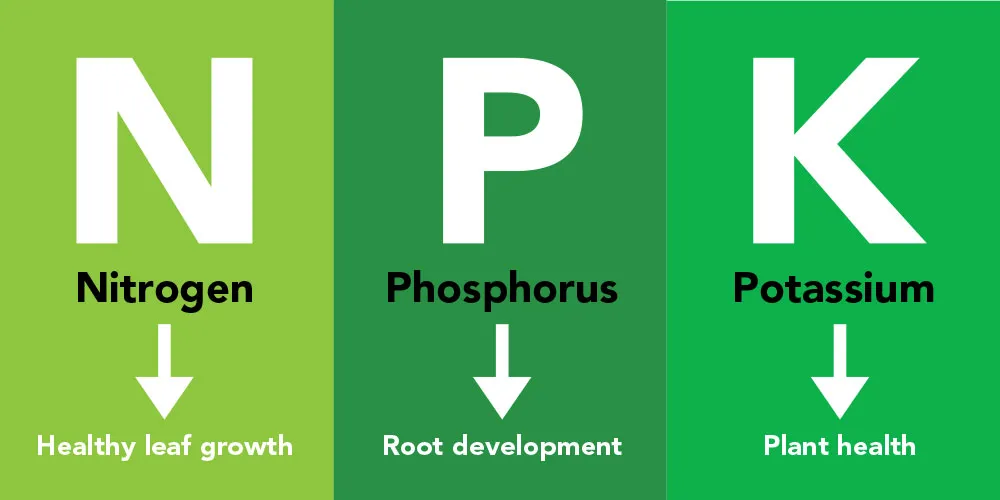
Creating the Perfect Nutrient Solution
To create the perfect nutrient solution for your hydroponic setup, it is essential to understand the specific needs of your plants. Different plants require different nutrient ratios to thrive, and it is important to provide them with the optimal balance of essential elements. Nitrogen, phosphorus, and potassium are the three primary macronutrients that plants need in larger quantities. These macronutrients play crucial roles in plant growth, from facilitating photosynthesis to supporting cellular development.
In addition to macronutrients, plants also require micronutrients in smaller amounts. These include elements such as iron, manganese, zinc, and copper, which are essential for enzyme activation and various metabolic functions within the plant. Providing the correct amounts of both macronutrients and micronutrients is crucial for maintaining healthy and productive plants in your hydroponic system.
To accurately determine the nutrient requirements of your plants, it is recommended to conduct regular water and solution analyses. Testing the pH level, electrical conductivity (EC), and nutrient concentrations of your solution will ensure that your plants are receiving the appropriate nutrients in the right proportions. By monitoring these factors, you can make any necessary adjustments to maintain optimal nutrient levels and prevent nutrient deficiencies or toxicities.
• Nitrogen, phosphorus, and potassium are the three primary macronutrients that plants need in larger quantities.
• Macronutrients play crucial roles in plant growth, from facilitating photosynthesis to supporting cellular development.
• Plants also require micronutrients such as iron, manganese, zinc, and copper in smaller amounts.
• Micronutrients are essential for enzyme activation and various metabolic functions within the plant.
• Conduct regular water and solution analyses to accurately determine the nutrient requirements of your plants.
• Testing pH level, electrical conductivity (EC), and nutrient concentrations will ensure appropriate nutrients in the right proportions.
• Monitoring these factors allows for adjustments to maintain optimal nutrient levels and prevent deficiencies or toxicities.
Certainly! Here’s a table outlining the steps for creating the perfect nutrient solution for hydroponic growth:
| Step | Description |
|---|---|
| 1. Use a Professional Liquid Nutrient | Choose a quality brand formulated specifically for your hydroponic medium. Ensure you use associated additives as they impact overall performance. |
| 2. Clean and Sterile Water | Use fresh reverse osmosis water or treated tap water to prevent diseases. |
| 3. Add Nutrients and Additives to Water | Add water first, then mix in nutrients and additives. Never mix concentrated nutrients directly. |
| 4. Measure Nutrient Solution Strength (EC) and pH | Test the solution’s electrical conductivity (EC) and pH. Maintain pH between 5.0 to 6.5. Adjust as needed. |
| 5. Tepid Solution | Keep the nutrient solution at around 68°F (20°C) for optimal plant health. |
| 6. Water Thoroughly | When hand watering or top feeding, ensure around 20% of the solution runs out of the pots. |
Remember to regularly monitor and adjust your nutrient solution to support healthy plant growth in your hydroponic system.
Proper pH Levels for Successful Hydroponic Growth
Proper pH levels are essential for successful hydroponic growth as they directly influence the availability of nutrients to plants. Maintaining the correct pH range ensures that plants are able to absorb the necessary minerals and maintain optimal health. In hydroponic systems, the ideal pH range typically falls between 5.5 and 6.5, slightly acidic to neutral.
When the pH level in a hydroponic system deviates from the optimal range, nutrient deficiencies or toxicities can occur, leading to stunted growth or even plant death. pH levels that are too high, indicating alkalinity, can result in the unavailability of certain essential nutrients, such as iron, zinc, and manganese. Conversely, pH levels that are too low, indicating acidity, can lead to an excessive uptake of nutrients, causing nutrient imbalances and resulting in nutrient burn or nutrient lockout.
To maintain proper pH levels, regular monitoring and adjustments are crucial. Using a pH meter or test kit, growers can regularly measure the pH of the nutrient solution and make any necessary amendments to bring it within the desired range. pH adjustment can be achieved through the addition of acids or bases. Commonly used pH adjusting agents in hydroponics include phosphoric acid to lower pH and potassium hydroxide to raise pH.
By ensuring the proper pH levels in a hydroponic system, growers can optimize nutrient absorption, promote healthy plant growth, and ultimately maximize yields.
• Proper pH levels are essential for successful hydroponic growth
• Maintaining the correct pH range ensures optimal nutrient availability to plants
• The ideal pH range in hydroponic systems is between 5.5 and 6.5, slightly acidic to neutral
• Deviations from the optimal pH range can lead to nutrient deficiencies or toxicities
• High pH levels can result in the unavailability of essential nutrients like iron, zinc, and manganese
• Low pH levels can cause excessive uptake of nutrients leading to imbalances and nutrient burn or lockout
• Regular monitoring and adjustments are crucial for maintaining proper pH levels
• Using a pH meter or test kit helps measure the pH of the nutrient solution
• Amendments can be made to bring it within the desired range using acids or bases
• Commonly used agents for adjusting pH in hydroponics include phosphoric acid and potassium hydroxide
By ensuring proper pH levels, growers can optimize nutrient absorption, promote healthy plant growth, and maximize yields.
The Role of Lighting in the Kratky Method
The Role of Lighting in the Kratky Method
Lighting is a crucial element in the success of any hydroponic system, and this holds true for the Kratky Method as well. Proper lighting ensures that plants receive the necessary energy for growth and development. It is essential to understand the specific lighting requirements for each stage of plant growth in order to maximize yields in your Kratky setup.
In the vegetative stage, plants require a longer duration of light, typically around 14-18 hours per day. This extended photoperiod stimulates leaf and stem growth, allowing plants to establish a strong foundation. Additionally, providing plants with a spectrum of light that leans towards the blue end of the spectrum promotes healthy foliage development.
As plants transition into the flowering stage, the light duration should be reduced to around 12 hours per day. During this phase, it is crucial to provide them with a spectrum of light that emphasizes the red end of the spectrum. This spectrum helps trigger the plants’ flowering response, leading to the production of vibrant and abundant blooms.
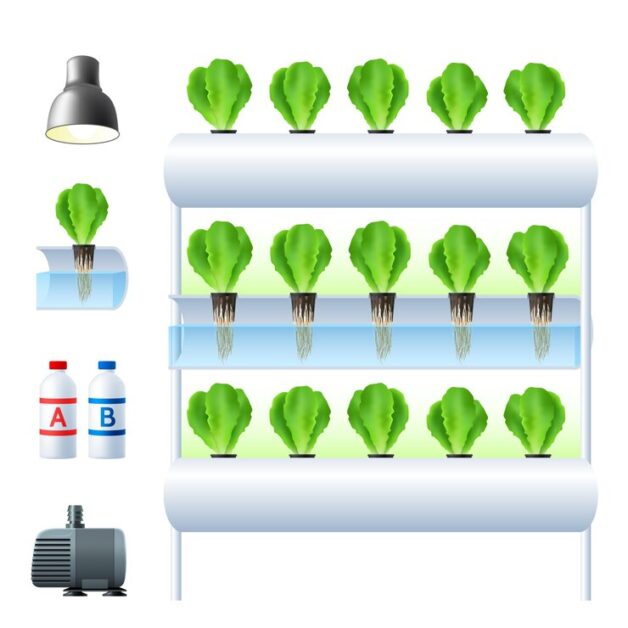
Proper placement of the lights is equally significant. Placing the light source approximately 12-18 inches above the plants ensures they receive uniform illumination. It’s also crucial to monitor the temperature around the lamps and maintain a consistent distance to prevent heat stress or burning of foliage.
By understanding the role of lighting in the Kratky Method and implementing the appropriate techniques, you can optimize plant growth and achieve the desired yields in your hydroponic setup.
• Proper lighting is crucial for the success of any hydroponic system, including the Kratky Method.
• Lighting provides plants with the necessary energy for growth and development.
• Understanding the specific lighting requirements for each stage of plant growth is essential to maximize yields in a Kratky setup.
• In the vegetative stage, plants need around 14-18 hours of light per day to stimulate leaf and stem growth.
• Providing a spectrum of light that leans towards the blue end promotes healthy foliage development during the vegetative stage.
• During the flowering stage, light duration should be reduced to around 12 hours per day.
• A spectrum of light emphasizing the red end helps trigger flowering response and leads to vibrant blooms.
• Proper placement of lights is important, with a recommended distance of 12-18 inches above plants for uniform illumination.
• Monitoring temperature around lamps and maintaining consistent distance prevents heat stress or burning of foliage.
Temperature and Humidity Considerations
When it comes to hydroponic growth, temperature and humidity considerations play a crucial role in ensuring optimal plant health and productivity. The right balance of temperature and humidity can create the ideal environment for plants to thrive and achieve their full growth potential.
Maintaining the proper temperature is essential for hydroponic systems as it directly affects plant metabolism and nutrient uptake. Most plants thrive in temperatures between 65°F to 75°F (18°C to 24°C), although specific temperature requirements may vary depending on the plant species. It is important to monitor and control the temperature in your hydroponic setup by using thermostats, fans, and cooling systems, if necessary, to prevent overheating or temperature fluctuations that can stress or damage plants.
Humidity levels also play a significant role in hydroponic growth. The ideal relative humidity for most plants falls between 50% to 70%. Higher humidity can increase the risk of fungal diseases and mold growth, while lower humidity levels can lead to dehydration and stress for the plants. To maintain proper humidity levels in your hydroponic system, you can use a hygrometer to monitor humidity and employ techniques such as misting or using humidifiers or dehumidifiers to adjust levels accordingly.
By carefully monitoring and controlling temperature and humidity in your hydroponic setup, you can create an environment that fosters healthy plant growth and maximizes yields. Understanding the specific temperature and humidity requirements of your chosen plant species will allow you to provide the ideal conditions for their success in a hydroponic system.
• Maintaining the proper temperature is essential for hydroponic systems as it directly affects plant metabolism and nutrient uptake.
• Most plants thrive in temperatures between 65°F to 75°F (18°C to 24°C), although specific temperature requirements may vary depending on the plant species.
• It is important to monitor and control the temperature in your hydroponic setup by using thermostats, fans, and cooling systems, if necessary, to prevent overheating or temperature fluctuations that can stress or damage plants.
• Humidity levels also play a significant role in hydroponic growth.
• The ideal relative humidity for most plants falls between 50% to 70%.
• Higher humidity can increase the risk of fungal diseases and mold growth, while lower humidity levels can lead to dehydration and stress for the plants.
• To maintain proper humidity levels in your hydroponic system, you can use a hygrometer to monitor humidity and employ techniques such as misting or using humidifiers or dehumidifiers to adjust levels accordingly.
Managing Water Levels in the Kratky Method
Managing water levels is crucial for success in the Kratky method of hydroponics. This innovative technique, developed by Dr. Bernard Kratky, allows plants to grow in a stationary solution of nutrient-rich water without the need for pumps or electricity. However, maintaining the correct water level is essential to ensure optimal plant growth and nutrient uptake.
To manage water levels in the Kratky method, it is important to start with the right amount of water. The initial water level should be set just below the bottom of the net cup, allowing the roots to access the nutrient solution. As the plants grow, the water level will naturally decrease as the plants uptake the nutrients. It is crucial to monitor the water level regularly to ensure it does not drop too low, as this can cause stress to the plants and hinder their growth. On the other hand, maintaining the water level too high can lead to oxygen deprivation for the roots. Striking the right balance is key to success in the Kratky method.
One effective way to manage water levels is to use a float valve system. This system automatically adjusts the water level by controlling the inflow of fresh water to the container. As the plants consume the nutrient solution, the float valve opens to allow more water to enter, maintaining the desired water level. This not only helps ensure consistent nutrient availability but also prevents the risk of drowning the roots or allowing them to dry out. By implementing a float valve system, gardeners can save time and effort in managing water levels while promoting healthy plant growth.
• Start with the right amount of water, just below the bottom of the net cup
• Monitor the water level regularly to prevent it from dropping too low or becoming too high
• Striking the right balance is crucial for optimal plant growth and nutrient uptake
• Use a float valve system to automatically adjust the water level by controlling fresh water inflow
• The float valve opens as plants consume nutrient solution, maintaining desired water level
• This system ensures consistent nutrient availability and prevents drowning or drying out of roots
• Implementing a float valve system saves time and effort in managing water levels
Preventing Algae Growth in your Hydroponic System
Algae growth can be a common issue in hydroponic systems, but with proper prevention measures, you can keep your system clean and running smoothly. One effective way to prevent algae growth is by controlling the amount of light that reaches the nutrient solution. Algae thrive in the presence of light, so it’s important to shield your hydroponic setup from excess light exposure.
To prevent algae growth, utilize light-blocking materials such as black plastic or light-resistant covers for your reservoir or container. These materials will prevent light penetration, reducing the likelihood of algae growth. Additionally, position your hydroponic system in an area with minimal natural light and ensure that any artificial lighting used for plant growth is directed solely towards the plants.
Another important step in preventing algae growth is to maintain proper water circulation and oxygenation. Algae thrives in stagnant water, so it’s crucial to ensure that your hydroponic system has adequate water movement and aeration. Consider using air stones or air pumps to oxygenate the water, promoting healthy plant growth while inhibiting algae development.
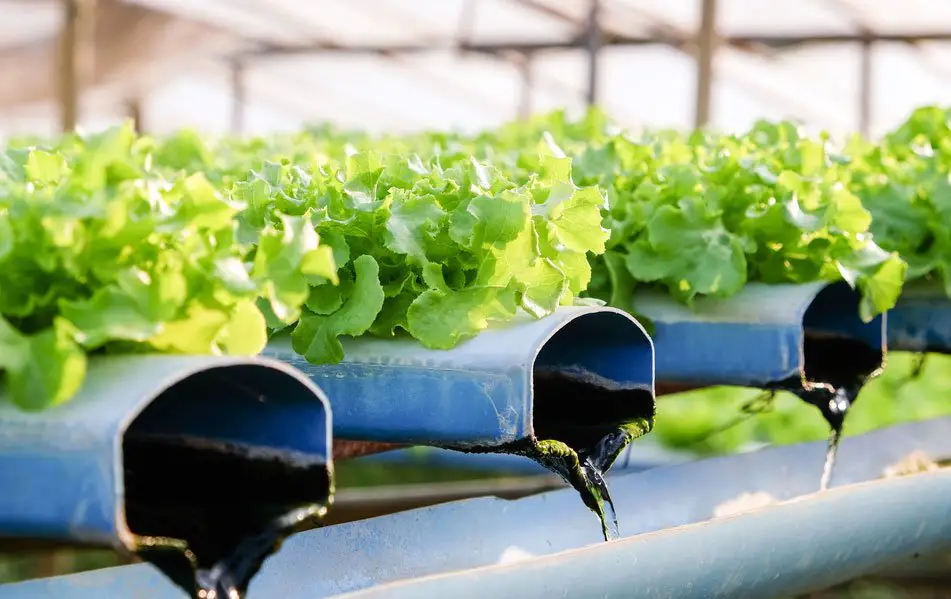
By implementing these preventative measures, you can effectively minimize algae growth in your hydroponic system and maintain a healthy environment for your plants.
• Use light-blocking materials such as black plastic or light-resistant covers for your reservoir or container
• Position your hydroponic system in an area with minimal natural light
• Direct any artificial lighting used for plant growth solely towards the plants
• Maintain proper water circulation and oxygenation in your hydroponic system
• Consider using air stones or air pumps to oxygenate the water
Maintaining Proper Air Circulation in your Hydroponic Setup
To maximize the success of your hydroponic setup, maintaining proper air circulation is crucial. Adequate air movement within your indoor garden helps to prevent the buildup of excess humidity, mold, and stale air. It also ensures that your plants receive a fresh supply of carbon dioxide (CO2), which is essential for their growth and development.
One effective way to ensure good air circulation is by using oscillating fans strategically placed throughout your hydroponic system. These fans help create a gentle breeze that circulates air around the plants, preventing stagnant pockets of air. It is recommended to position the fans in such a way that the airflow is evenly distributed, reaching all corners of the growing area.
In addition to oscillating fans, consider incorporating a ventilation system that includes exhaust fans and intake vents. Exhaust fans help remove hot, humid air from the grow space, while intake vents allow fresh, cooler air to enter. This not only keeps the temperature and humidity levels in check but also helps replenish the CO2 levels necessary for photosynthesis.
Furthermore, it is important to regularly monitor and maintain the cleanliness of your air circulation system. Check the fans and filters for any dust or debris accumulation, as this can hinder proper airflow. Regularly clean or replace filters as needed to ensure optimal performance.
By prioritizing proper air circulation in your hydroponic setup, you create an ideal environment for your plants to thrive. With the right balance of air movement, temperature, and humidity, you can ensure healthy growth and bountiful harvests.
• Oscillating fans should be strategically placed throughout the hydroponic system to create a gentle breeze and prevent stagnant air.
• Position the fans in a way that ensures even airflow reaches all corners of the growing area.
• Consider incorporating a ventilation system with exhaust fans and intake vents to regulate temperature and humidity levels.
• Exhaust fans remove hot, humid air while intake vents bring in fresh, cooler air for photosynthesis.
• Regularly monitor and clean the air circulation system to prevent dust or debris accumulation that can hinder airflow.
• Replace filters as needed to maintain optimal performance.
By prioritizing proper air circulation, you can create an ideal environment for healthy plant growth and high yields in your hydroponic setup.
Identifying and Preventing Common Pests and Diseases
Common pests and diseases can wreak havoc on your hydroponic system, leading to reduced yields and potentially causing irreversible damage to your plants. It is crucial to be able to identify and prevent these issues to maintain a healthy and thriving garden.
Identifying pests is the first step in combating them effectively. Keep a close eye on your plants for any signs of unusual insect activity or damage. It is essential to familiarize yourself with the most common pests that affect hydroponic systems, such as aphids, whiteflies, fungus gnats, and spider mites. Additionally, inspect your plants regularly for any symptoms of diseases, such as leaf spots, wilting, or discoloration.
Once pests or diseases are identified, prompt action is necessary to prevent further damage. Start by using organic pest control methods, such as introducing beneficial insects like ladybugs or lacewings, which can help keep pest populations in check. Alternatively, natural insecticidal soaps or horticultural oils can help control pests effectively. For diseases, consider using preventative measures, such as ensuring proper ventilation to reduce humidity levels or implementing a regular sanitation routine to minimize the spread of pathogens.
A proactive approach, including regular monitoring, early identification, and appropriate preventive measures, is crucial in maintaining a pest- and disease-free hydroponic system. By doing so, you can ensure the health and productivity of your plants, providing you with a bountiful harvest and allowing you to maximize the benefits of your hydroponic gardening endeavor.
• Regularly monitor your plants for signs of unusual insect activity or damage
• Familiarize yourself with common pests that affect hydroponic systems, such as aphids, whiteflies, fungus gnats, and spider mites
• Inspect your plants for symptoms of diseases, including leaf spots, wilting, or discoloration
• Take prompt action once pests or diseases are identified to prevent further damage
• Use organic pest control methods like introducing beneficial insects or using natural insecticidal soaps or horticultural oils
• Consider preventative measures for diseases such as proper ventilation and regular sanitation routines
• Take a proactive approach by regularly monitoring your system and implementing appropriate preventive measures
• Ensure the health and productivity of your plants to maximize the benefits of hydroponic gardening.
Certainly! Here’s a table outlining common pests and diseases, along with preventive measures:
| Pest or Disease | Description | Preventive Measures |
|---|---|---|
| Cockroaches | Common indoor pests that thrive in warm, humid environments. They can contaminate food and spread diseases. | – Store food in airtight containers. – Regularly clean up crumbs and spills. – Seal cracks and crevices. |
| Bed Bugs | Small, reddish-brown insects that infest bedding and furniture. Their bites can cause skin irritation. | – Regularly inspect bedding and furniture. – Wash bedding in hot water. – Use bed bug-proof mattress covers. |
| Ants | Social insects that invade homes in search of food. They can be a nuisance and contaminate food. | – Seal entry points. – Keep food in tightly sealed containers. – Clean up spills promptly. |
| Moths | Common pantry pests that infest stored grains, flour, and dried fruits. They lay eggs in food products. | – Store dry goods in airtight containers. – Regularly inspect pantry items. – Freeze infested items to kill larvae. |
| Rodents (Rats and Mice) | Prolific breeders that can cause structural damage and spread diseases. | – Seal gaps and holes in walls. – Use snap traps or bait stations. – Keep food stored securely. |
| Plant Diseases | Various fungal, bacterial, and viral diseases that affect plants. | – Practice crop rotation. – Remove infected plant material promptly. – Use disease-resistant plant varieties. |
Harvesting and Pruning Techniques for Maximum Yield
Harvesting and pruning techniques are crucial for maximizing the yield of your hydroponic garden. Proper management of these processes ensures that your plants stay healthy, promote growth, and produce the highest quality crops.
When it comes to harvesting, timing is everything. Each crop has a specific maturity period, and harvesting too early or too late can impact the flavor, texture, and overall quality of your harvest. Monitor your plants closely and look for visual cues such as color changes, texture, and size to determine the optimal time to harvest.
For leafy greens and herbs, it’s best to harvest when the outer leaves are mature but before the entire plant bolts or flowers. By removing the outer leaves first, you allow the inner leaves to continue growing, ensuring a continuous supply of fresh greens. When it comes to fruits such as tomatoes or peppers, wait until they reach their full color and size before picking them. Additionally, use sharp and sanitized pruning shears or scissors to avoid damaging the plant.
Pruning, on the other hand, involves the removal of specific parts of the plant to promote better growth and higher yields. Regular pruning not only controls the plant’s shape and size but also encourages the development of side shoots and new growth. This can significantly enhance productivity and ensure a more efficient use of resources.
When pruning, focus on removing damaged or diseased leaves, stems, or fruits. By removing these parts, you prevent the spread of pathogens and allow the plant to allocate its resources towards healthier areas. Additionally, clearing out crowded or excess foliage improves air circulation and reduces the risk of pest infestations.
Remember to always use clean and sharp tools when pruning to minimize the risk of introducing infections. Take care not to excessively prune, as this can stress the plant and hinder its growth. With proper harvesting and pruning techniques, you’ll be well on your way to maximizing your hydroponic garden’s yield and enjoying a bountiful harvest.
• Proper management of harvesting and pruning techniques is essential for maximizing yield in a hydroponic garden.
• Timing is crucial when it comes to harvesting, as picking crops too early or too late can affect their flavor, texture, and overall quality.
• Visual cues such as color changes, texture, and size can help determine the optimal time to harvest different crops.
• For leafy greens and herbs, it’s best to harvest when the outer leaves are mature but before the entire plant bolts or flowers.
• Removing the outer leaves first allows inner leaves to continue growing and ensures a continuous supply of fresh greens.
• Fruits like tomatoes or peppers should be picked when they reach their full color and size for maximum flavor and quality.
• Use sharp and sanitized pruning shears or scissors while harvesting to avoid damaging the plant.
• Pruning involves removing specific parts of the plant to promote better growth and higher yields.
• Regular pruning controls plant shape, encourages side shoots development, improves productivity, and optimizes resource utilization.
• Focus on removing damaged or diseased leaves, stems, or fruits during pruning to prevent pathogen spread.
• Clearing out crowded foliage enhances air circulation reduces pest infestations risk.
• Always use clean tools while pruning minimize infection risks.
• Avoid excessive pruning that may stress plants’ growth potential
Troubleshooting Common Issues in the Kratky Method
When it comes to using the Kratky Method for hydroponic gardening, there are a few common issues that gardeners may encounter. One of the most prevalent is the development of root rot. Root rot occurs when the roots are submerged in water for too long, leading to oxygen deprivation and the growth of harmful bacteria and fungi. To prevent root rot, it is crucial to ensure that the water level in your system remains at the appropriate level. Additionally, using sterile equipment and maintaining proper hygiene practices can help prevent the introduction of pathogens into the system.
Another issue that can arise in the Kratky Method is nutrient imbalance. Since nutrients are not replenished in a traditional sense in this method, it is important to monitor the nutrient levels carefully. Both deficiencies and excesses can hinder plant growth and lead to nutrient lockout. Regularly testing and adjusting the nutrient solution can help ensure that plants are receiving the right amount of essential nutrients they need to thrive. It may also be helpful to use a balanced nutrient solution specifically formulated for the Kratky Method to mitigate potential imbalances. By addressing these common issues proactively, gardeners can overcome challenges and achieve successful hydroponic growth using the Kratky Method.
• To prevent root rot in the Kratky Method:
– Maintain appropriate water levels in the system
– Use sterile equipment to avoid introducing pathogens
– Practice proper hygiene to minimize bacterial and fungal growth
• Nutrient imbalance can be addressed by:
– Regularly monitoring nutrient levels
– Testing and adjusting the nutrient solution as needed
– Using a balanced nutrient solution formulated for the Kratky Method
• Proactive troubleshooting can lead to successful hydroponic growth:
– Overcoming challenges such as root rot and nutrient imbalances
– Ensuring plants receive essential nutrients for optimal growth.
Tips for Expanding and Scaling your Hydroponic Operation
Expanding and scaling your hydroponic operation is an exciting endeavor that can lead to increased productivity and success. However, it is important to approach this expansion with careful planning and consideration. One of the first tips to keep in mind is to start small and gradually increase your operation as you gain expertise and experience. This will help you manage any potential challenges or setbacks that may arise.
As you expand, it is crucial to carefully monitor and track your plant growth and nutrient levels. Implementing a system to regularly check and maintain optimal nutrient levels will ensure healthy plant growth and consistent yield. Additionally, consider investing in automated monitoring and control systems that can help you manage multiple hydroponic systems efficiently.
Another important tip for expanding and scaling your hydroponic operation is to invest in proper training and education. This will enable you to stay updated with the latest advancements and best practices in hydroponics. Attending workshops, conferences, and online courses can provide valuable insights and guidance from experts in the field.
Furthermore, it is vital to establish a reliable and efficient supply chain to support your expanding operation. This includes sourcing high-quality seeds, nutrients, and equipment from trusted suppliers. Maintaining good relationships with suppliers can ensure timely delivery and availability of essential resources for your hydroponic setup.
Lastly, for successful expansion and scaling, it is crucial to have a solid marketing plan in place. Develop a brand identity, create a user-friendly website, and use social media platforms to promote your hydroponic operation. Engage with customers and respond to their inquiries promptly to build trust and establish your expertise in the industry.
By following these tips, you can effectively expand and scale your hydroponic operation, setting yourself up for continued success and growth in the future. With careful planning, attention to detail, and a commitment to ongoing learning, you can maximize the potential of your hydroponic setup and contribute to the advancement of this innovative and sustainable farming method.
• Start small and gradually increase your operation as you gain expertise and experience
• Monitor and track plant growth and nutrient levels regularly for healthy growth and consistent yield
• Consider investing in automated monitoring and control systems to efficiently manage multiple hydroponic systems
• Invest in proper training and education to stay updated with the latest advancements and best practices in hydroponics
• Establish a reliable supply chain by sourcing high-quality seeds, nutrients, and equipment from trusted suppliers
• Develop a solid marketing plan including brand identity, user-friendly website, social media promotion, and prompt customer engagement.
please do watch the below video for more information
What is the Kratky Method?
The Kratky Method is a passive hydroponic technique that allows plants to absorb nutrients from a stagnant solution without the need for a continuous water or nutrient supply.
What are the advantages of using the Kratky Method?
The Kratky Method is simple and cost-effective, requiring minimal equipment and maintenance. It also eliminates the need for pumps or electricity, making it ideal for small-scale operations or areas with limited resources.
How do I select the optimal plants for the Kratky Method?
Choose plants that have a shorter growing cycle and are suitable for the passive hydroponic environment. Leafy greens, herbs, and some fruiting plants like tomatoes or peppers can thrive in the Kratky Method.
What are the essential nutrients required for hydroponic growth?
Hydroponic plants require macronutrients such as nitrogen, phosphorus, and potassium, as well as micronutrients like iron, calcium, and magnesium. These nutrients can be provided through a balanced nutrient solution.
How do I create the perfect nutrient solution for my hydroponic system?
To create a nutrient solution, you will need to dissolve hydroponic nutrients in water according to specific ratios. Follow the manufacturer’s instructions and regularly monitor the pH and nutrient levels to ensure optimal growth.
What pH levels should I maintain for successful hydroponic growth?
The pH level of the nutrient solution should be maintained between 5.5 and 6.5 for most hydroponic plants. Regularly test the pH and adjust it using pH up or pH down solutions if necessary.
How does lighting play a role in the Kratky Method?
Adequate lighting is crucial for photosynthesis and plant growth in the Kratky Method. Use high-quality grow lights that provide the appropriate spectrum and intensity for your plants’ needs.
What temperature and humidity considerations should I keep in mind for the Kratky Method?
The ideal temperature for most hydroponic plants is between 65°F and 75°F (18°C to 24°C). Humidity levels should be maintained around 50% to 60%. Proper ventilation and airflow can help regulate temperature and humidity.
How do I manage water levels in the Kratky Method?
In the Kratky Method, water levels are initially filled to cover the roots and then allowed to decrease as the plants consume the water. Monitor the water level regularly and add more as needed to prevent the roots from drying out.
How can I prevent algae growth in my hydroponic system?
To prevent algae growth, keep the hydroponic system clean and avoid exposing it to direct sunlight. You can also use light-blocking materials or add an algae inhibitor to the nutrient solution.
Why is proper air circulation important in a hydroponic setup?
Proper air circulation helps prevent the buildup of heat and humidity, reducing the risk of mold, pests, and diseases. Use fans or ventilation systems to maintain a steady flow of air around the plants.
How can I identify and prevent common pests and diseases in my hydroponic system?
Regularly inspect your plants for signs of pests or diseases and take immediate action if detected. Implement preventive measures such as maintaining cleanliness, using organic pest control methods, and practicing good hygiene.
What are some harvesting and pruning techniques to maximize yield in hydroponics?
Harvest leafy greens by cutting the outer leaves first to allow the inner leaves to continue growing. Prune plants regularly to remove any dead or diseased foliage and promote better airflow and light penetration.
How can I troubleshoot common issues in the Kratky Method?
Some common issues in the Kratky Method include nutrient deficiencies, pH imbalances, and root rot. By regularly monitoring the nutrient solution, pH levels, and plant health, you can identify and address these issues promptly.
What are some tips for expanding and scaling my hydroponic operation?
When expanding, start small and gradually increase your production capacity. Invest in automation and technology to streamline processes, ensure proper record-keeping, and maintain efficient operations. Continuously educate yourself about new techniques and advancements in hydroponics for better scalability.

Nicole Burke is a dynamic writer at SouthElMonteHydroponics, fueled by her passion for horticulture and environmental sustainability. Armed with a degree in Environmental Science from a renowned institution, Nicole’s expertise lies in hydroponic gardening, organic farming, and biodiversity conservation. Her insatiable curiosity and love for nature drive her to explore innovative techniques in hydroponics, seeking to revolutionize the way we grow crops in urban environments. Nicole’s writing reflects her deep commitment to promoting eco-conscious practices and fostering a deeper connection between humans and the natural world. Through her engaging storytelling, she inspires others to embrace sustainable living and harness the power of hydroponics for a greener future.

